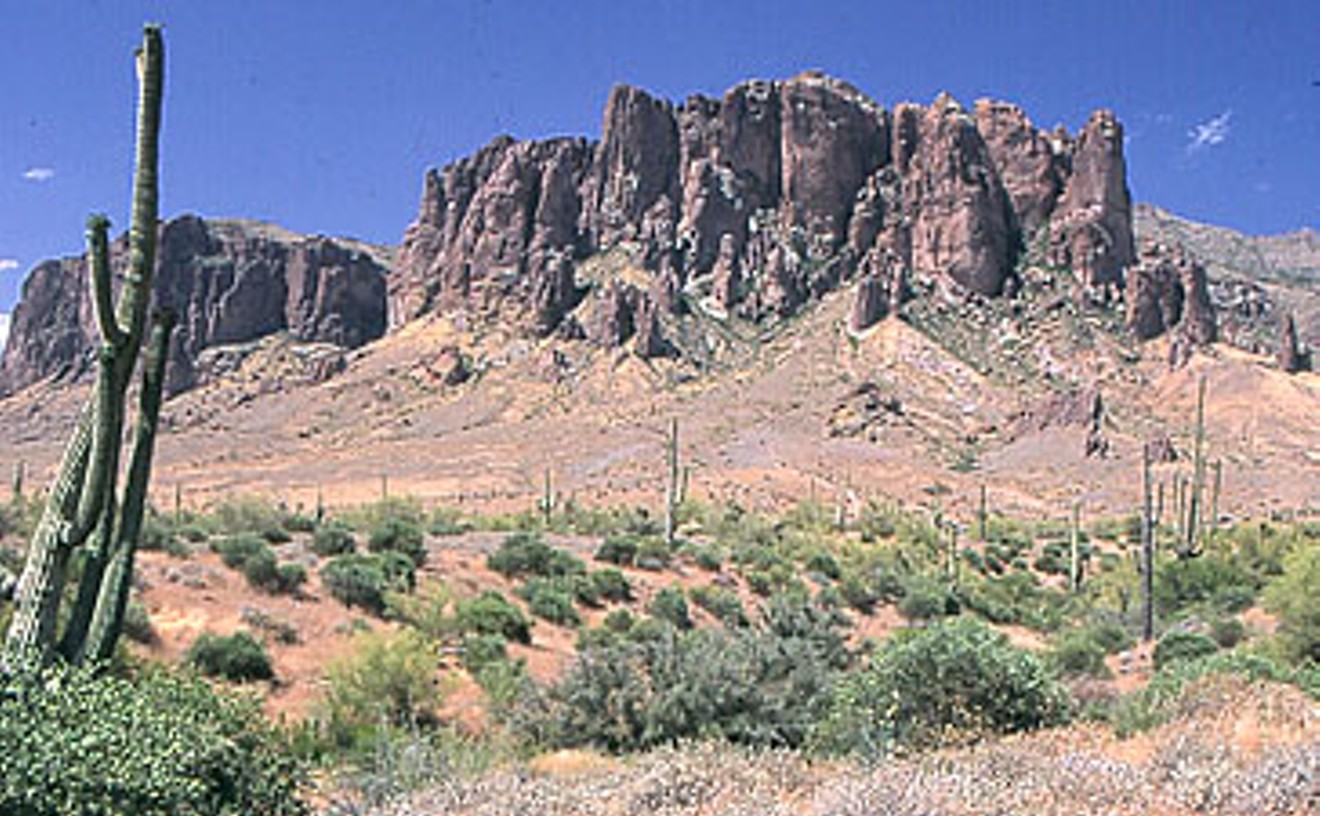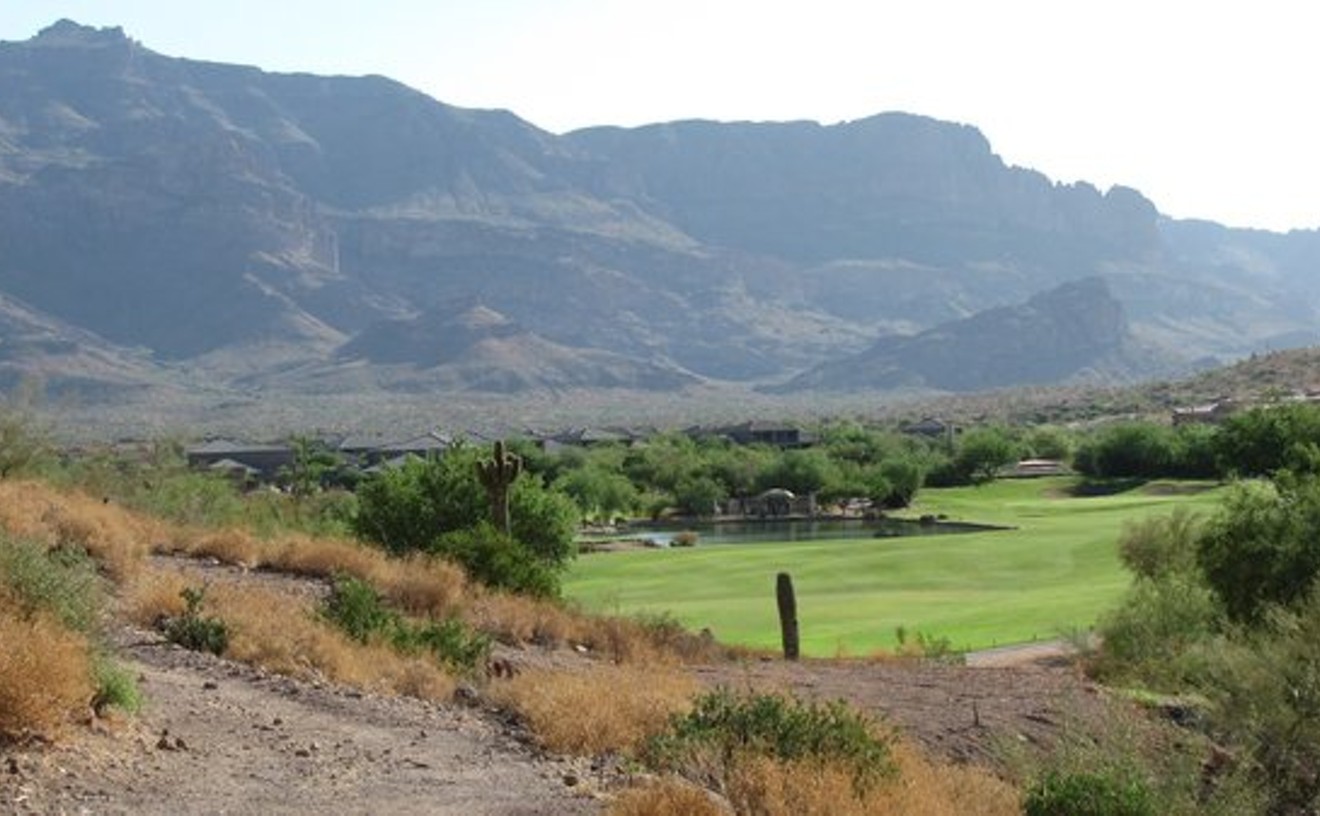This is one of those trails that's like a video arcade game -- it keeps getting tougher and tougher until it finally beats you.
It's only 2.5 miles from the trailhead to Flatiron, one of those cruelly majestic sentinels of the Superstition Mountains.
The problem is, the last .9 mile climbs 1,700 feet through rock and cactuses from an area called The Basin, which is a meniscus-buster hike in itself.
This final accent has the withering grade of a climb from a front-range high lake to the Continental Divide. Here, though, the rocks are more jagged, the snakes more venomous and the vegetation more potentially flesh-ripping. Now factor in the broiling Valley sun and, well, this ain't no stroll through the park.
That said, it's a spectacular hike, both as you climb into the towering cragginess and as you descend (oh so carefully) with a panoramic view of the East Valley.
Park rangers advise that only experienced hikers who are in good condition attempt the five-hour Flatiron hike. If you're going to try it, make sure you bring two liters of water, be careful where you place your hands, and -- most important -- watch your step.







